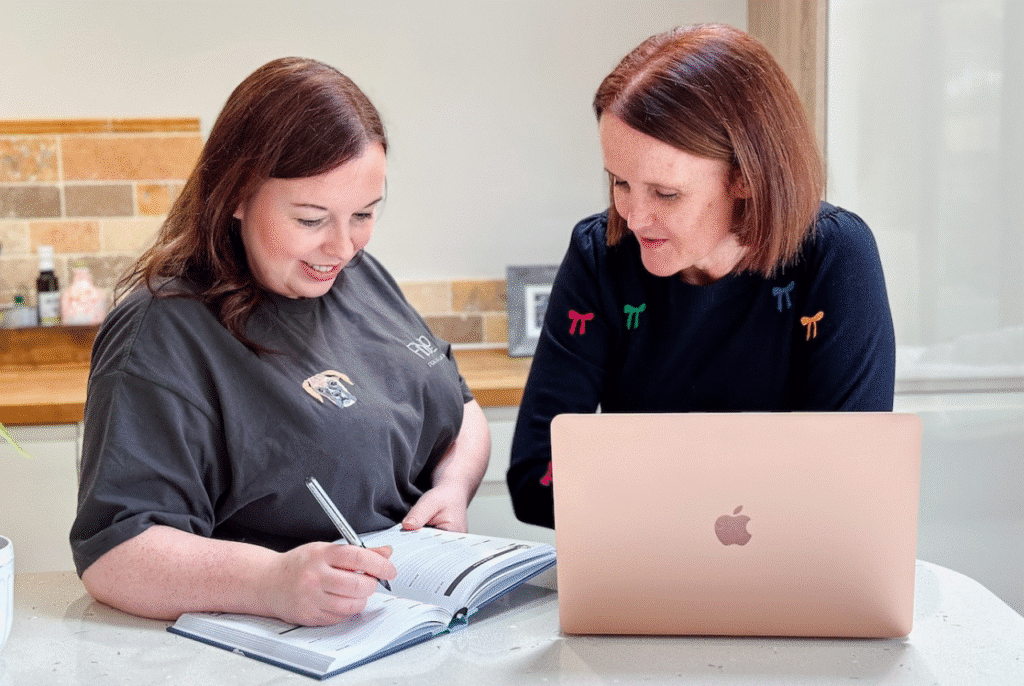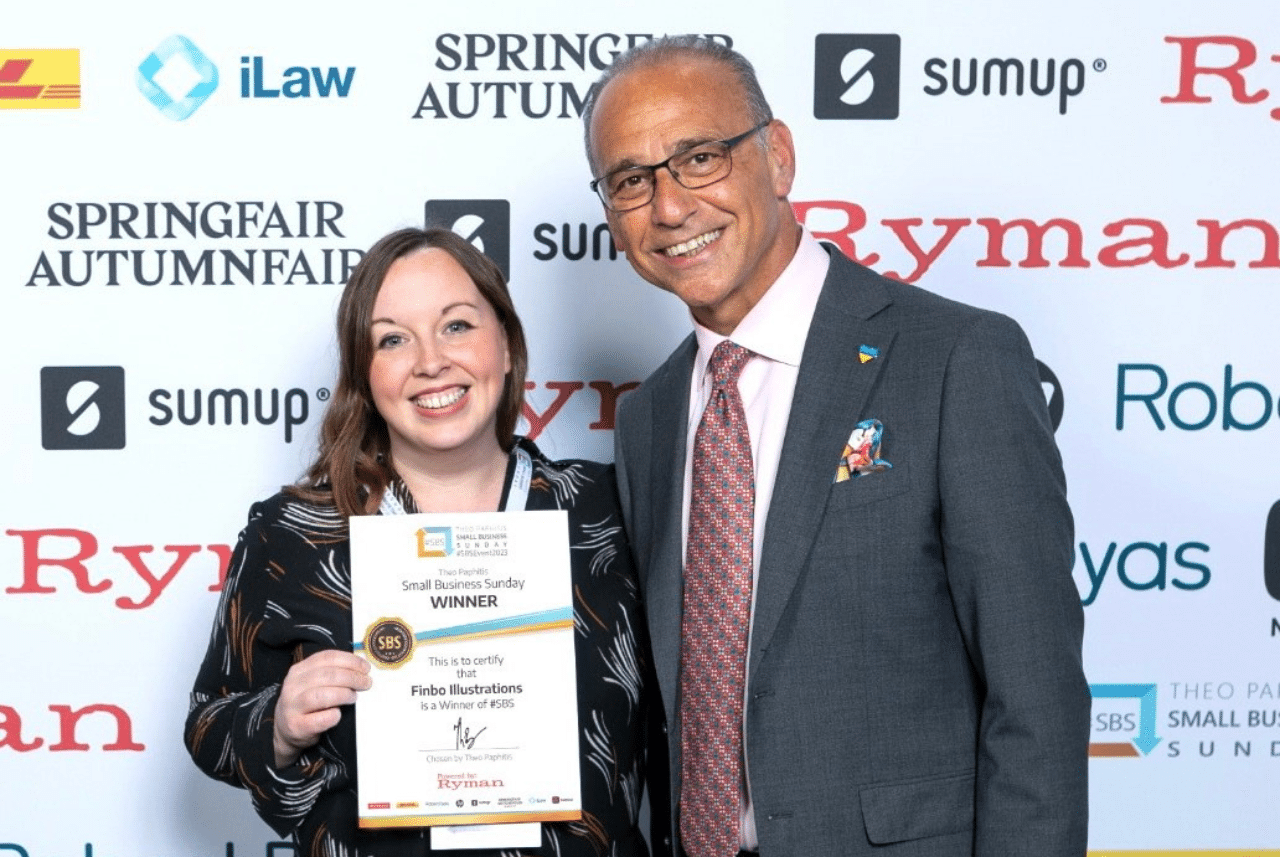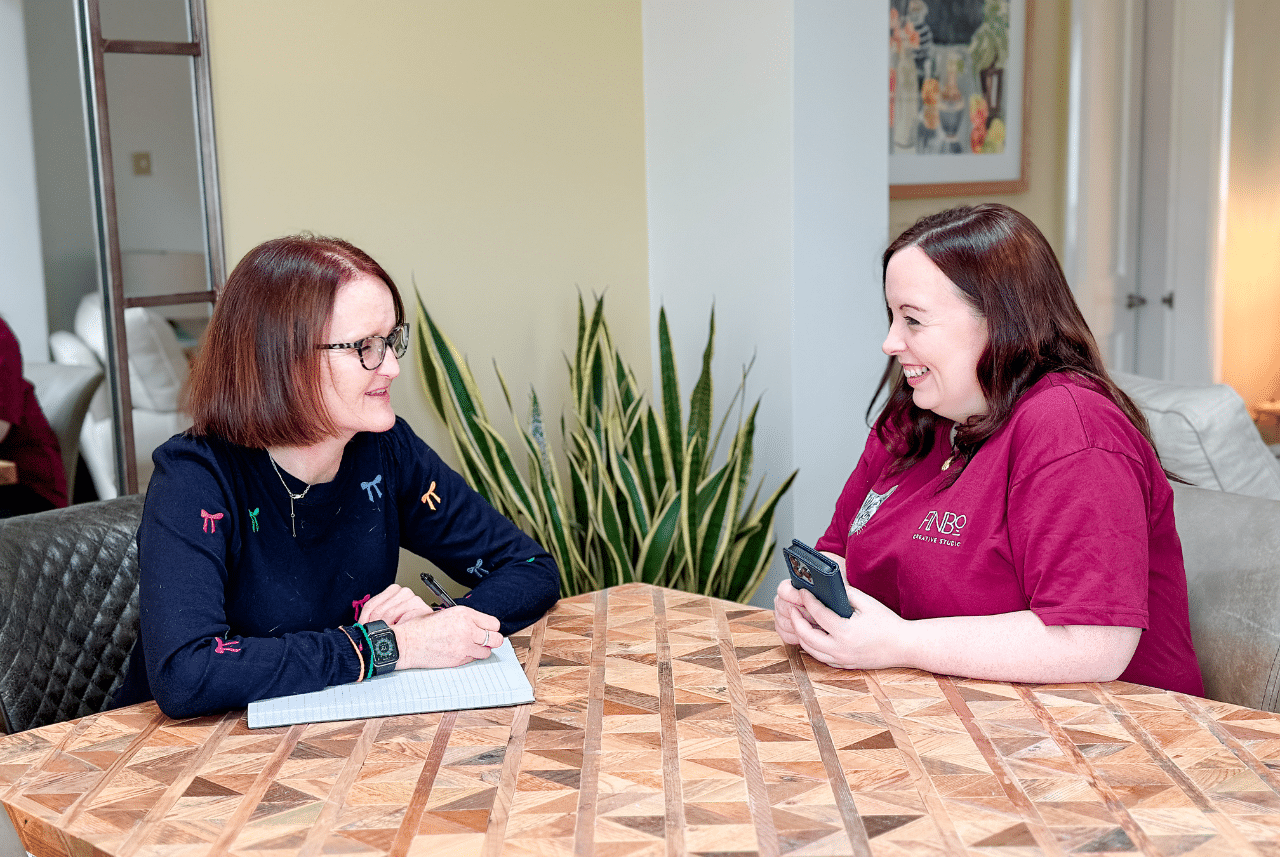If you’re thinking of buying a Pet Business Content Planner and want to get the most value from it, this guide is for you.
Or, if you’ve already bought your copy, and are looking for some inspiration on ways to use it then I hope you find this helpful.
(£5 from each 2026 planner sale before December 9th 2025 is donated to the charity StreetVet and matched by The Big Give meaning the charity gets £10 – find out more here)
In this post, I’m going to walk you through how to actually use your Pet Business Content Planner throughout the year.
The purpose of the planner is to be a tool to help you stay consistent, feel more organised, and keep your pet business moving forward.
We’ll look at how to use the key features inside the planner, how to build it into your routine, and what to do when things don’t go to plan.
Plus you’ll hear from the FABULOUS Clare Ware, a dog trainer specialising in sighthounds, on how she uses the planner.
It’s even inspired her to create her own Sighthound Spotlight Day which is happening on April 30th each year, and that you’ll find in the 2026 edition.
Listen to a podcast episode on this topic on the player link below.
What is the 2026 Pet Business Content Planner
It’s an A5 book designed for pet professionals to help plan content and feel less overwhelmed.
These are the different elements of the planner.
Monthly prompts and awareness days
Plan your content around dates that link to the work you do, so you can identify points in the year to talk about your products and services.
Planning ahead means you’re able to find ways to promote your offers, and can be on top of your social media, your email marketing, your website, pitching to the press.
All of this means more eyes on your business and more opportunities to make sales.
Goal setting and reflection
The planner has space to set goals at the start of each quarter and each month, plus a reflection section at the end of each month.
This is where you can capture your highlights, what worked and what didn’t and your income and outgoings.
Tracking all of this is helpful to look back on, so you can see how far you’ve come and identify anything you might want to do more of, or less of, and what’s making an impact for you.
Words for When journaling prompts
These are what makes the planner different to anything else out there. These are exercises you can use when you need support.
Topics include the peer fear, being copied, treating yourself with compassion, protecting your energy, planning projects, comparisonitis and being copied.
All common challenges I see repeatedly with my clients are addressed through evidence-based coaching tools.
Weekly planning and habit tracking
There’s a diary for each week so you can make a note of your appointments, your priorities, your to-do list and work through it.
The idea is you have everything in one place to feel organised and focused and not frazzled.
There are no ‘rules’ on how to use the planner, but here are some suggestion to get started.
Start with a planning power hour
Block out one hour to look at the month ahead.
Consider what’s happening in your business, so the different classes you might be running, or programmes, or products that are most relevant at that time.
How might you talk about them? Do you have case studies or testimonials you can share? Do you need to fill a class? How will you go about it?
Fill in the key dates and awareness days that matter to your business and link to what you offer.
This means that you’re not just staring at a blank page – you’re starting with ‘the bare bones’ to give you some structure for the month ahead.
Take time to reflect each month
At the end of each month, there’s space to look back and see what worked well, what you might like to change, and prompts to help you capture your wins.
Running your own business can be hectic, demanding, soul-destroying and we can forget about the positive things that happen.
One of the key things I wanted to include was the Paws and Reflect section to help you see your successes.
This means that you’re not just rushing into the next thing – you’re taking a moment to recognise what’s working and build the kind of confidence that keeps you going through the tough bits too.
Build a habit (but keep it simple)
Choose one time per week to open your planner, reflect on the week just gone, and look ahead to what’s coming up.
I like to do this on a Sunday night – it helps me go to bed feeling calm because I already know what’s happening in the week ahead.
I’m not waking up on Monday feeling chaotic or scrambling to remember what I’m supposed to be doing.
You can also use this time to check in on what habits you want to focus on that week.
Maybe you’re tired and need more rest. Maybe it’s time to tackle your accounts. Use the habit tracker to capture what you need to prioritise.
This means that you’re giving yourself space to plan – so you start the week feeling grounded, focused, and clear on what matters.

Use the Words for When when you’re stuck
Topics include things like peer fear, comparisonitis, being copied, protecting your energy, showing yourself some compassion, and getting on with projects you’ve been putting off.
These are coaching exercises designed to help when something’s niggling and you can’t quite put your finger on it.
Maybe it’s imposter syndrome, maybe it’s burnout, or maybe you’re just feeling a bit flat.
Pick the one that feels most suitable, take a few minutes, step away from screens, and write how you feel – that’s what the space is there for.
This means that you’re not pushing through or ignoring how you feel – you’re using evidence-based coaching tools to support yourself.
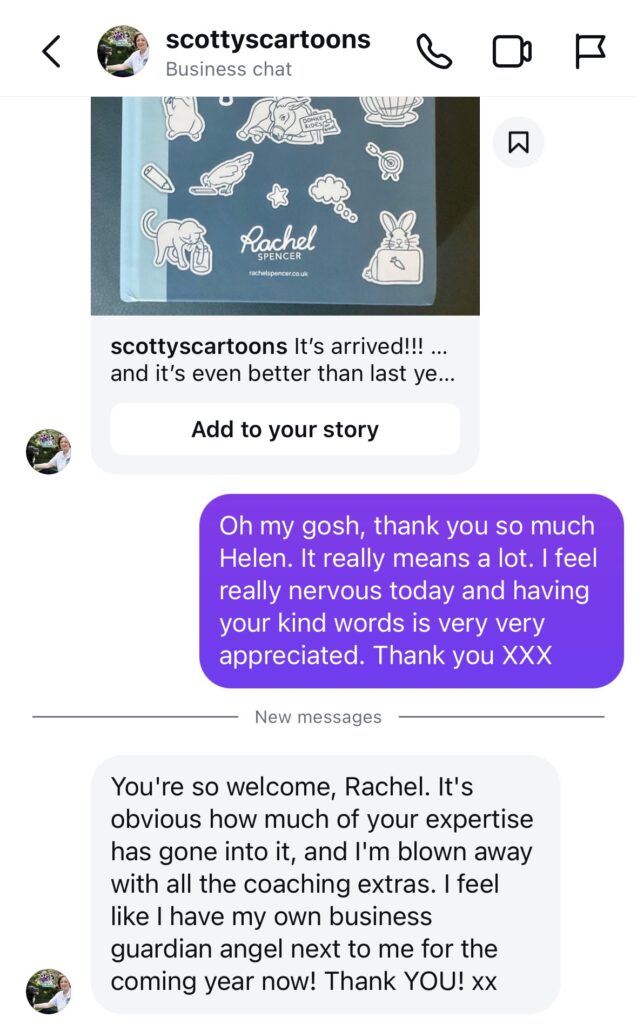
Have a monthly and quarterly check-in
Have a monthly or quarterly check-in 0 especially if you’re in the Planner Club, where we do this together on live Zoom calls with other pet pros.
Use the monthly review and quarterly planning pages to look at what worked, what didn’t, and what you want to take forward.
Check in with your goals – are you on track with where you wanted to be, or does something need adjusting?
You can do this in about 20 minutes at the end of each month – or come to a co-working morning and do it alongside others who are doing the same.
This means that you stay connected to your progress, make more informed decisions, and avoid taking things that no longer serve you into the next month or quarter.
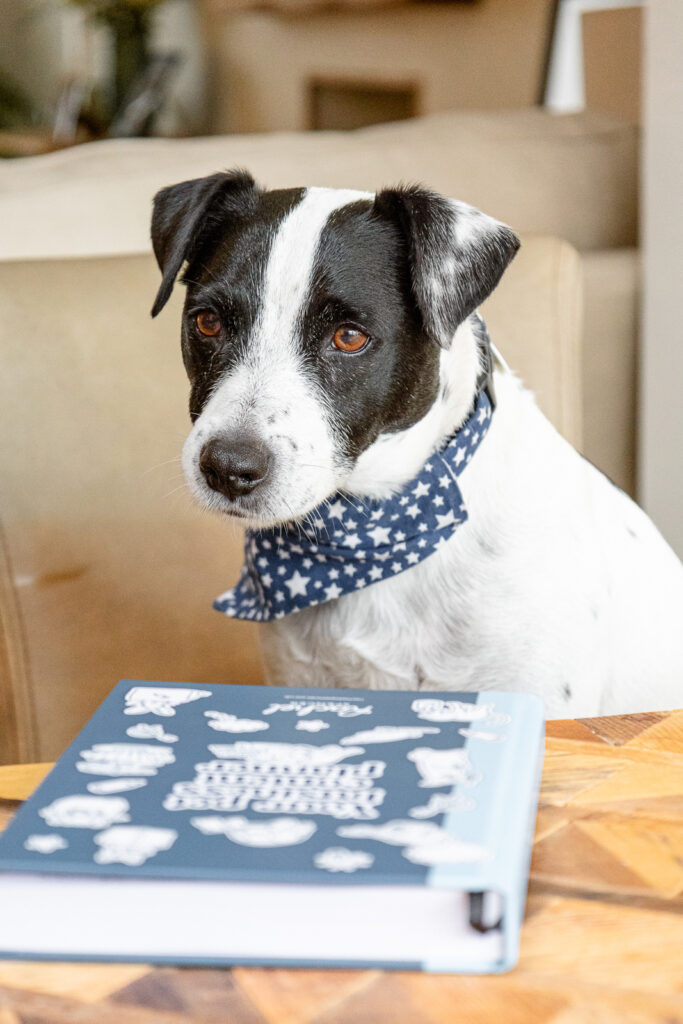
There is no ‘right or wrong or perfect’ way to plan
If you miss a week (or even a whole month), it doesn’t matter. The planner is there to support you, not to judge you.
Just turn the page, start where you are, and keep going.
And if you’re feeling stuck or frustrated, go to the Words for When section – there’ll be something there that helps – that’s what I created them for.
This means that your planner becomes a helpful tool – one you keep coming back to, even when life gets busy.
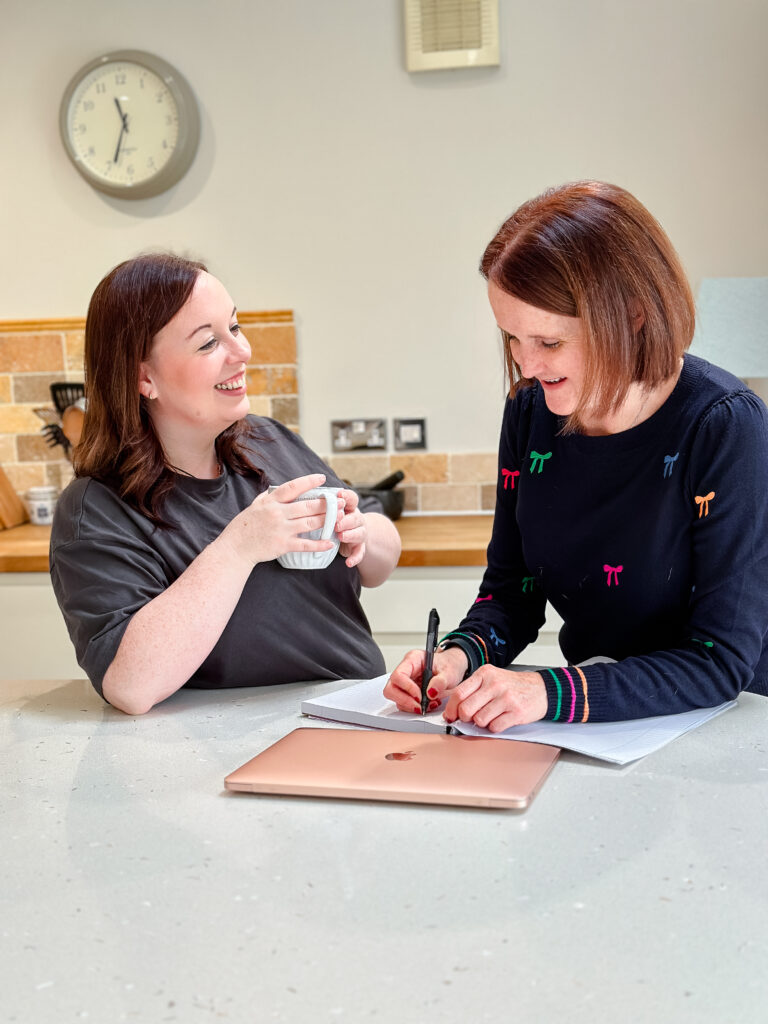
The Pet Business Content Planner and The Planner Club
The 2026 Pet Business Content Planner is designed to help you plan, reflect, and stay on track with your content and your mindset.
But if you want the extra layer of support – planning sessions, co-working time, accountability – join us inside the Planner Club.
You get your planner, a full-day planning event on November 24th 2025 (plus replays), quarterly planning calls, and six co-working mornings a year.
The planner is £40: https://rachelspencer.co.uk/product/pet-business-content-planner/
The Planner Club is £120 and includes your planner: https://rachelspencer.co.uk/product/pet-business-planner-bundle/
Further reading/listening
Should you buy my Pet Business Content Planner and Companion?
What is the Pet Business Planner Club and should you join?
Is my Pet Business Planning Event right for you?
How to use awareness days in your pet business content
Navigating the rollercoaster that is running your own business
The importance of looking back and seeing how far you’ve come

